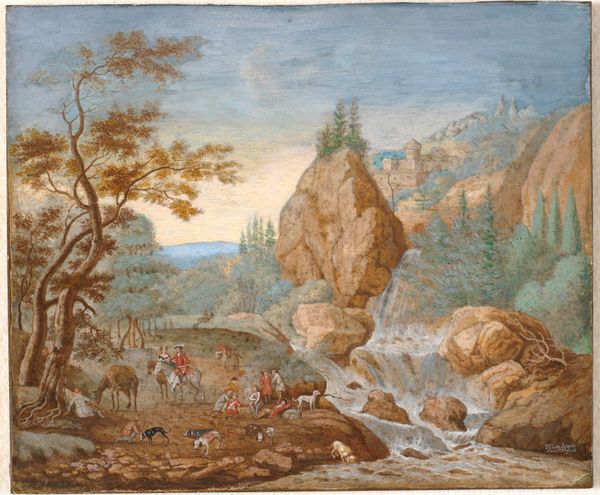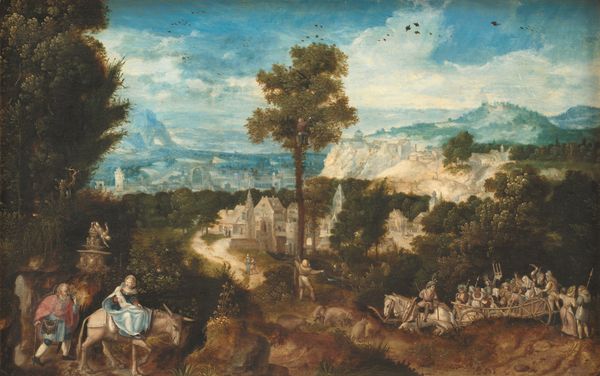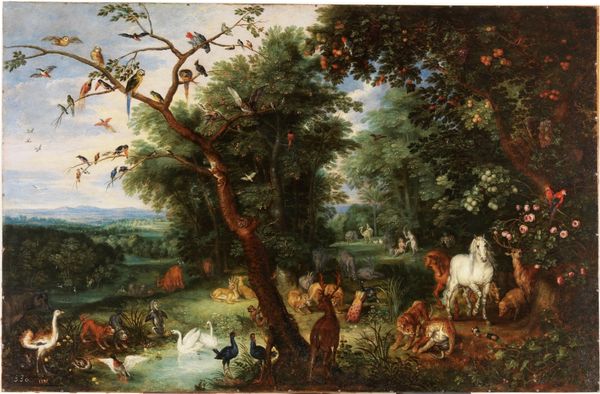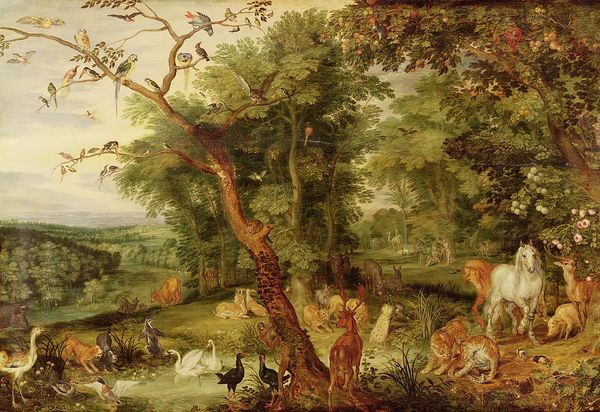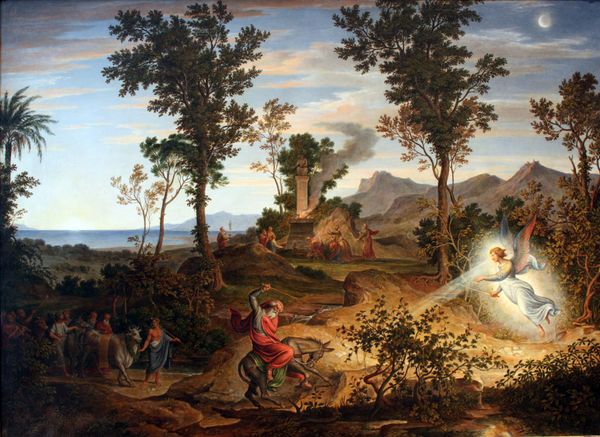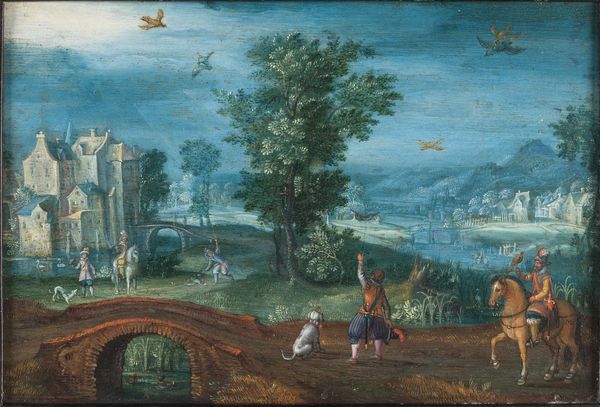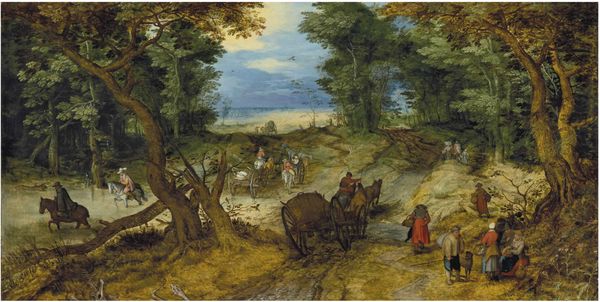
oil-paint
#
woman
#
animal
#
oil-paint
#
landscape
#
figuration
#
oil painting
#
child
#
13_16th-century
#
genre-painting
#
history-painting
#
italian-renaissance
#
building
Dimensions: 69.0 x 121.1 x min. 0.8 cm
Copyright: Public Domain
Curator: Giorgione's oil painting "The Finding of Romulus and Remus," created sometime after 1520, depicts a pastoral scene, currently held in the Städel Museum. What's your initial read of this landscape? Editor: It feels surprisingly… idyllic for a scene about abandoned children. There's a strange dissonance between the narrative and the almost festive tone. The colours are muted, the landscape soft, yet we know this is a story about abandonment and survival against the odds. Curator: Precisely. The landscape here, in that Italian Renaissance style, takes precedence. But the mythic elements—the wolf that was said to have nursed the twins, though she’s missing from this rendition —they are integrated almost seamlessly into a natural, everyday world. Note, also, how frequently mothers are depicted holding babies here. The repetition is very overt and intentional. Editor: I see what you mean. It almost domesticates the foundational myth. Romulus and Remus, the founders of Rome, reduced to small figures in a larger, seemingly harmonious society. But I also wonder about the social implications. Whose narrative is privileged here? Is the painting eliding some of the violence and social upheaval that surely accompanied the founding of Rome, presenting a sanitized, even patriarchal origin story? Curator: I'm fascinated by the cyclicality. The constant imagery of handing a child between individuals evokes the universal, intergenerational flow of societies building up and tearing each other down. Each individual passing forward is both benevolent and potentially carrying danger to the other party. Editor: And that tension is palpable, isn’t it? The serenity masks a power dynamic, a societal structure where vulnerability—babies, marginalized people—exists alongside established, powerful figures, ready to rebuild. It is still impactful to understand that societies rely on that dynamic. Curator: The artist makes one pause, and consider if that serenity is simply on the surface or embedded much deeper. Are the children in danger? The lack of an angry she-wolf suggests something softer... gentler? I am still struck by the imagery, despite your claims of male domination. Editor: Absolutely. It is a stunning contrast of serenity against latent political tension. The beauty is, perhaps, a deliberate act of obfuscation, revealing, through its contradictions, a complex and uncomfortable truth about power, mythology, and beginnings.
Comments
No comments
Be the first to comment and join the conversation on the ultimate creative platform.

